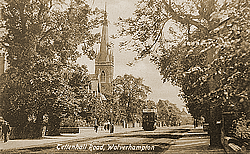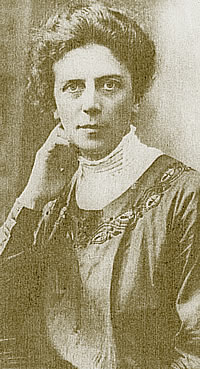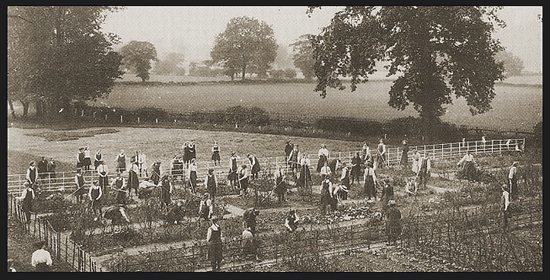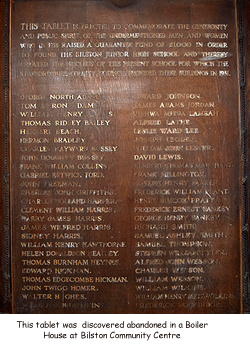|
Founded in 1849 by Elizabeth Jesser Reid, Bedford College was the first college in Britain to make provision for the university education of women. It was based in Bedford Square, central London. In 1900, the college became part of the University of London and in 1985 merged with other colleges to form what is now known as Royal Holloway.
Starting with 82 girls and five staff, pupil numbers rose to a healthy 190 by the end of her headship in 1911 when she left to take on the challenge of being the first Headmistress at Wolverhampton Girls' High School.
She felt passionately that girls should have an all-round education and insisted upon the teaching of science and was particularly keen on the role of games. Hockey, tennis, netball and cricket were played, as she believed that games encouraged girls to develop skills of ‘rapid observation, quickness of decision, love of fair play, courage, self-control and good temper’.
When the school was set up there were 180 fee-paying pupils, and a kindergarten for five and six year old boys and girls. The kindergarten was run by Miss Heatley in a big room in the west wing, next to the gymnasium (the Art Room as it was in the 1960s and the Music Room as it was in the 1990s). Half of the pupils came from Wolverhampton, and half from surrounding Staffordshire. Our school motto was chosen by Miss Heatley - 'Ludus Supra Praemium' - a latin 'pun' - the game/school exceeds the prize/reward - endorsing her idea that education is not simply just for the end reward (gaining qualifications), but you should enjoy gaining the experiences and knowledge that the learning process brings. Miss Heatley was well respected and liked by the pupils. She has been described as being sympathetic, kind and helpful and of having great courtesy and consideration for others. She played the important role of getting a girls high school established in the town to rival standards set by the long established Boys' Grammar School. click graphic to see larger version She lived nearby in Parkdale on the Tettenhall Road with her close friend and secretary, Miss Kirkman, and tried to instil lady-like behaviour into the girls, who were expected to dress modestly and behave with impecable manners. They were not allowed to walk down the drive without wearing their hats and gloves. (A school rule that persevered into the 1960s!). It was impressed upon them that they represented the school when seen in uniform. On the outbreak of war in 1914 she placed great weight on the importance on the carrying on with school traditions, and was always impressing upon the girls that they had a role to play in the war effort. As Headmistress she supported any efforts made to raise money for charities or to help the local community. The girls made lavender bags, and collected sheep's wool which was used to make knitted squares. They were dyed in a wide range of colours and sewn together to make blankets. Other items they made included book markers, wall paper bead necklaces, and soft cloth dolls. Allotments were also set up to produce fruit and vegetables for use in the school's kitchens.
Bilston Girls' High School
The school was founded in 1918 due to the philanthropy of those listed on the tablet. Brueton House was acquired by the Bilston Girls' High School in 1918. Built in 1905 as a private residence, this house became the the town's Library, Museum and Art Gallery in 1937 and this use continues. Initially a private school, in 1919 it was taken over by the Staffordshire County Council. The school moved to purpose built premises in Green Lanes in 1931 and this plaque was then placed in the entrance hall to remember those who first set up Bilston High School just after the war. The wording on the Tablet is as follows:
Her name can be found on the left had column, together with the names of dignitaries and prominent businessmen of Wolverhampton district - it is worthy of note that she was the only female contributor! I would imagine she was the driving force behind the venture. Quite a lady. (Click on the graphic for a larger view). In her memory a fund was established in December 1977. Its purpose is to provide financial assistance, by means of a loan, to past and present pupils of the school, (aged 16 years or over), to ‘advance them in life’ through their professional and business training. Loans are interest free and repayable either when the recipient is in employment or within five years of completing the training. Repayments can be made as a one-off payment, via a few instalments or by means of a monthly sum over a number of years.
|
|

Custom Search within WGHSOGU - Find what you are looking for really quickly!

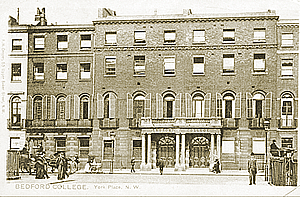 Helen Donaldson Heatley was born in Ravensmede, Northumberland in January 1867. She was admitted to
Helen Donaldson Heatley was born in Ravensmede, Northumberland in January 1867. She was admitted to 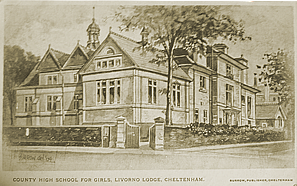 In 1905, the Trustees of
In 1905, the Trustees of 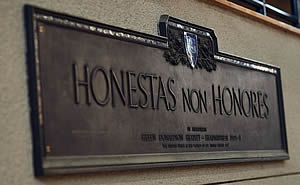 Miss Heatley chose the Pate’s Grammar School for Girls' school motto ‘Honestas non Honores’ (honourable conduct not worldly honours) as it embodied her ideal for the school – the spirit of doing good work for its own sake and not just in the hope of reward (a sentiment reflected in the motto she chose for Wolverhampton Girls' High School six years later).
Miss Heatley chose the Pate’s Grammar School for Girls' school motto ‘Honestas non Honores’ (honourable conduct not worldly honours) as it embodied her ideal for the school – the spirit of doing good work for its own sake and not just in the hope of reward (a sentiment reflected in the motto she chose for Wolverhampton Girls' High School six years later). 